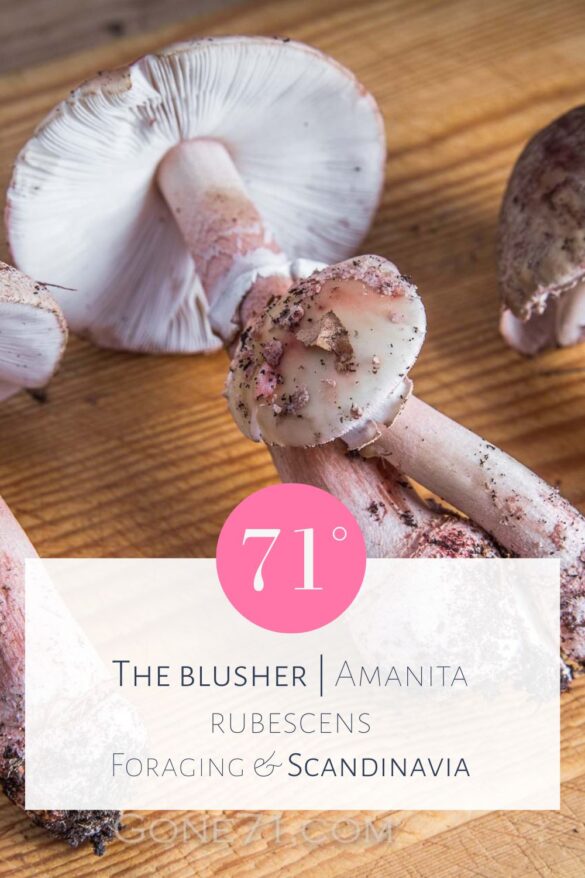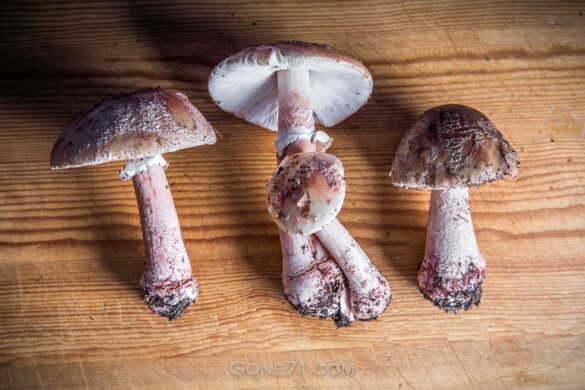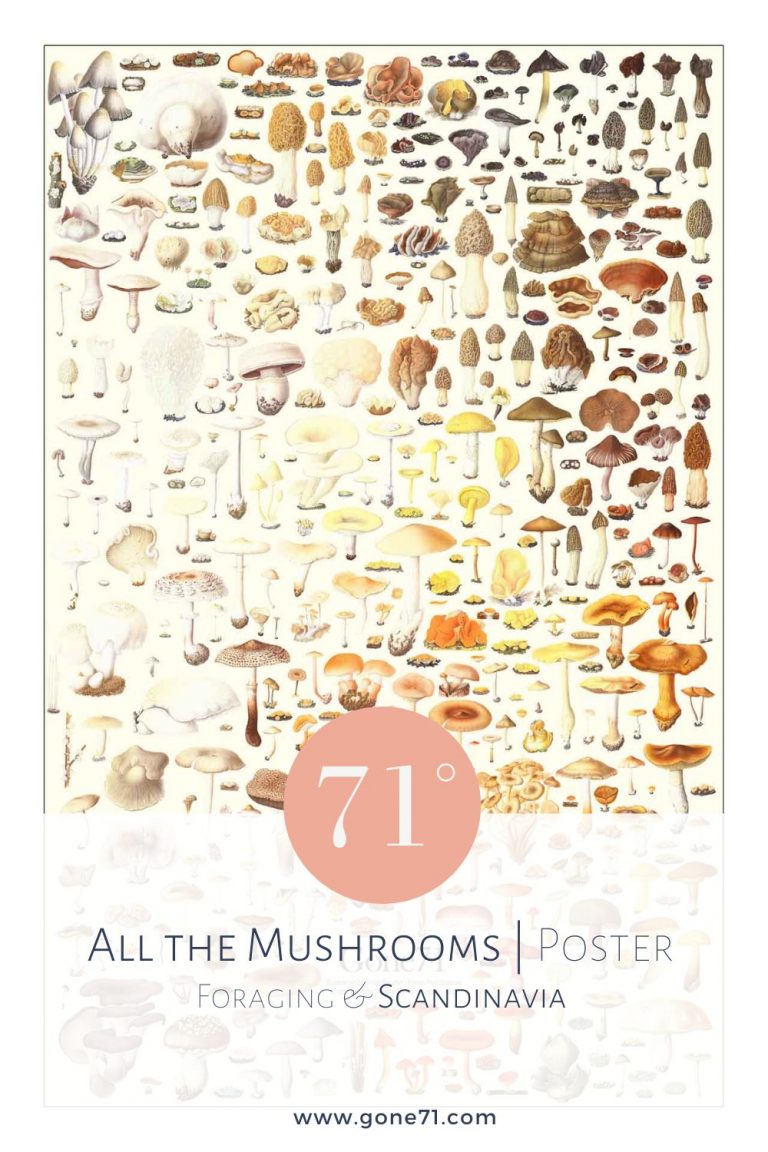swe.: Rodnande flugsvamp | nor.: Rødnende fluesopp | fin.: Rusokärpässieni | dt.: Perlpilz, Rötender Wulstling
It is quite common, often growing in large patches. Recent authors agree upon the edibility and deliciousness of this species. The author knows it to be one of the most plentiful, useful and delicious, after several years of pleasant experience with it (McIlvaine, 1900).

Apart from the many poisonous and lethal species which the Amanita family contains, it also holds many edible and even delicious species. One common and widespread species is the blusher, named after its tendency to get a pinkish colour upon pressure or when cut or broken.
The blusher (A. rubescens) is a controversial mushroom that should only be collected by experienced mushroom hunters, mainly due to its relationship to the potentially deadly poisonous panther cap (A. pantherina).
My personal experiences with the blusher (A. rubescens)
For me it has been a matter of course to collect this mushroom from my early childhood on – or at least to identify it. In my family it always had the reputation of being a second-choice mushroom and only went into the basket when there was not much else to pick.
I never really had to think about the question of confusion. As a rule, I can instinctively tell from quite a distance whether I have a blusher or a panther cap in front of me. At the latest, however, when I look at it up close, it is 100 percent clear without being able to pinpoint exactly which features I identify it with. I grew up with it. If there are any doubts whatsoever, the mushroom stays in the forest!
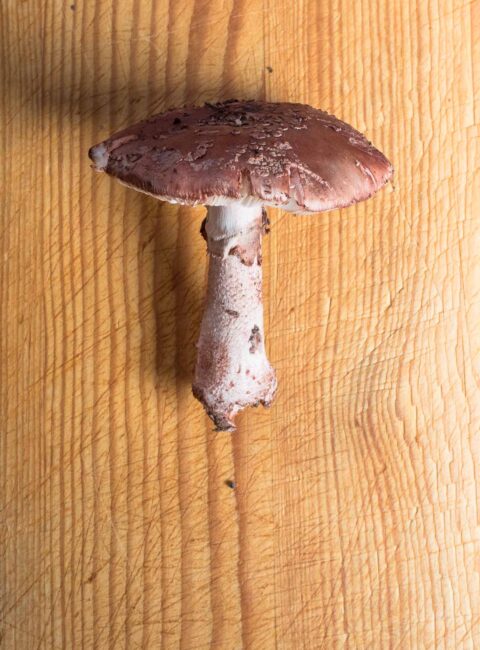
Recently, however, I have met mushroom enthusiasts on several occasions for whom this distinction is very difficult. On mushroom excursions, I keep observing that the blusher and the panther cap (A. pantherina) are regularly confused with one another. Hence the appeal when collecting this mushroom to be absolutely sure that you know what you are doing. There are certain features you have to know when you pick this mushroom, to identify it correctly. If you are not sure do not take it! Some authors even
Once you have identified it successfully, nothing stands in the way of culinary pleasure (except for your own taste).
It is hard work to reconsider learned patterns
After a long and hard work on myself, I’ve slowly started to escape my mushroom-habitus of classifying each mushroom according to what I have learned in my childhood. With many mushrooms like the blusher, it took a lot of work to free myself from my acquired patterns and the associated values. Now, however, I am ready to fully engage with it in culinary terms. And I am not disapointed!
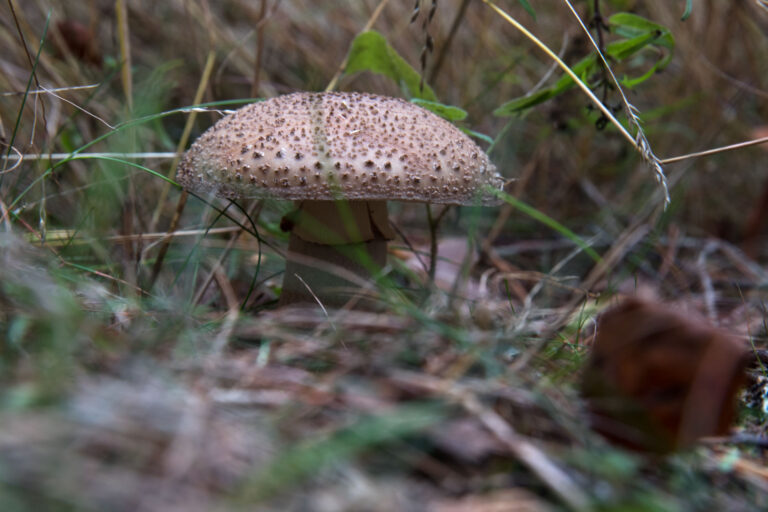
Appearance and habitad
The stem is firm and stable with a bulging foot. The ring is white or pinkish usually hanging and grooved. The cap is usually reddish-brown to pinkish and has grey-white scales. In my experience, these mushrooms are very undemanding and also grow in locations that otherwise produce few types of mushrooms. Unfortunately, they are often infested with insect larvae. A precise Inspection of the interior is therefore essential.
height: 5 – 15 cm
cap diameter: 3 – 15 cm
months: July – October
colours: white flesh (turning pinkish upon pressure), pinkish to redbrown hat, grey scales
characteristics: white, pinkish ring on stem, grey scales, changes colour upon pressure
habitat: deciduous forest, mixed forest, parks
smell: neutral, mild, raw potatoes, soil
consumption: edible (after cooking)
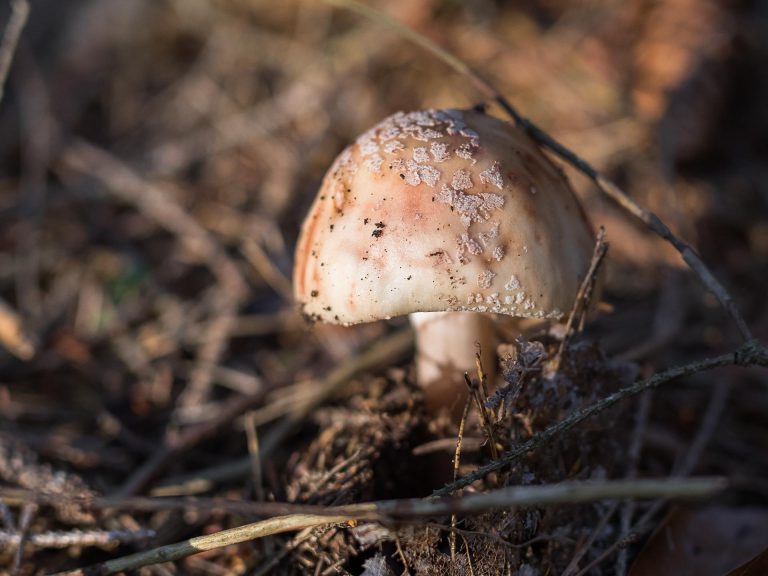
Lookalikes of the blusher
The panther cap (A. pantherina)
Be very careful not to confuse it with the deadly panther cap aka false blusher (Amanita pantherina). This is one of the most common and fatal mistakes. In order to pick this mushroom with confidents you have to know what you are doing. Otherwise consequences can be severe.
- The flesh of the blusher is white, becoming pink when bruised or exposed to air. This is one of the key features in differentiating it from the poisonous false blusher or panther cap (Amanita pantherina), whose flesh does not.
- The blusher has a turnip like base with warty belt, without sheath.
- The ring oft he blusher is heavily serrated
- The panther cap usually (not always!) has a slimmer build, and the brim of its hat is usually serrated (not the ring!). It is also distinguished by its radish smell.
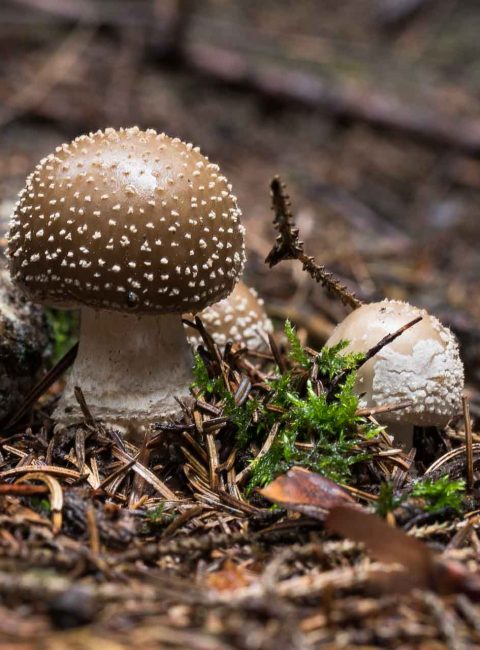
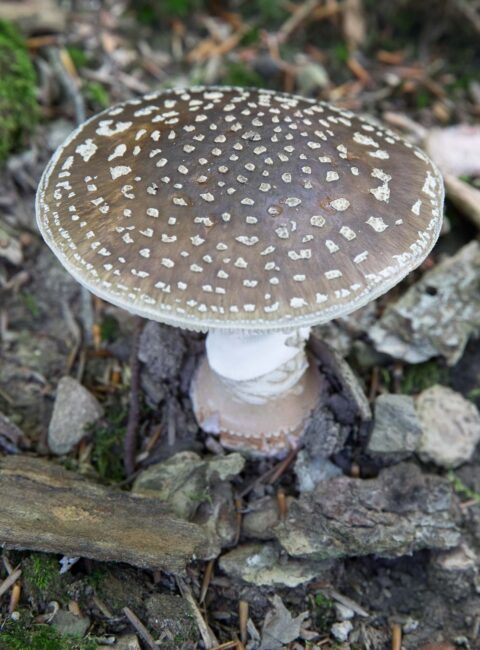
Other Amanita species
Some authors even call for a complete renunciation of all Amanita species, due to the many poisonous representatives. We find that a bit drastic, because highly valued representatives such as Caesar’s mushroom (A. caesare) also belong to this family. However, a healthy degree of caution is warranted when dealing with mushrooms from the Amanita family for edible purposes.
In younger stages of development confusion with the red or royal (brown) fly agaric (Amanita muscaria (var. regalis)) is also possible.
There are also other potential confusion partners such as the edible grey spotted amanita (A. excelsa) or the poisonous porphyry amanita (A. porphyria) and the Franchet’s amanita (A.franchetii) and a few others.
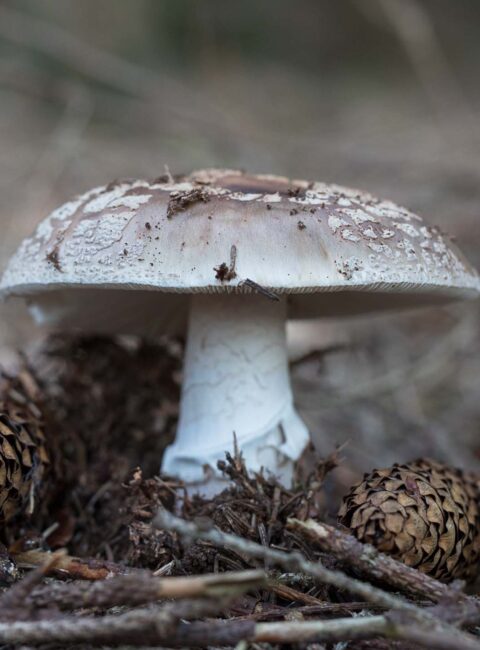
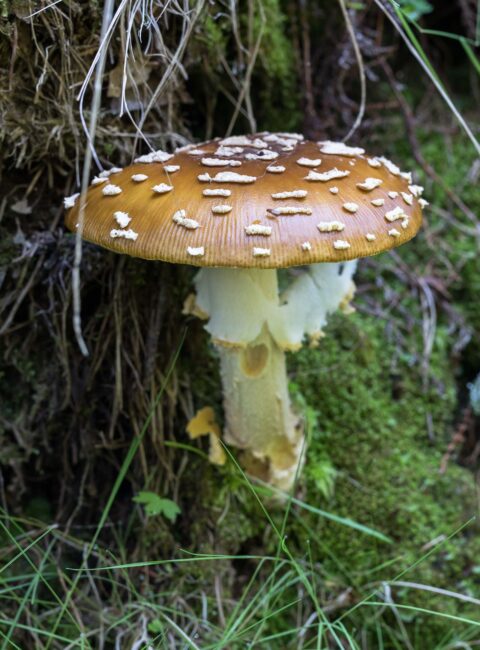
The blusher – A. rubescens und A. amerirubescens
In our research we learned that there is another very similar species in North America called “the blusher” – Amanita amerirubescens. We do not know this species and are referring here purely to the species A. rubescens, which is particularly widespread in Europe. In our understanding, A. amerirubescens was considered the same species for a long time and has only recently been listed as a separate species. The food values should be similar, but since we have no experience with them, we cannot go into whether this type is edible and tolerable to the same extent.
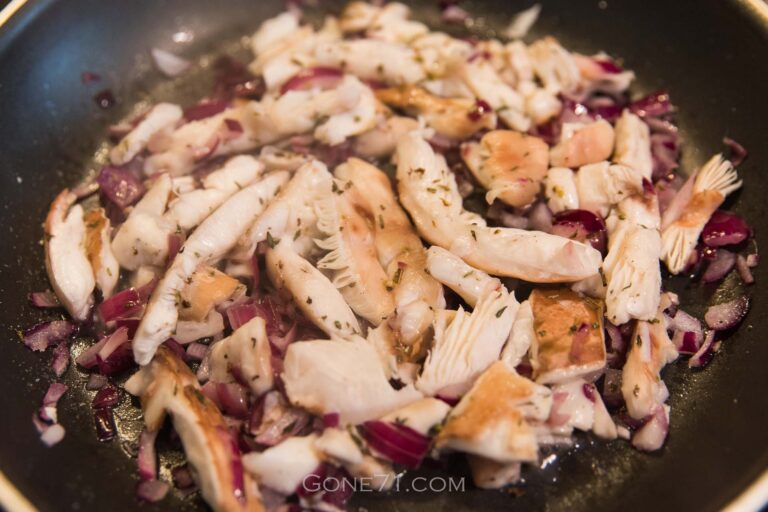
The blusher (A. rubescens) in the kitchen
For kitchen use we prefere young specimen. They have firm flesh and are very suitable for various mushroom dishes. We peel off the skin before further processing and the stems are also removed. The mushroom is poisonous in its raw state (like most mushrooms) and must therefore be well cooked or heated. It contains a hemolytic toxin and can cause anaemia if consumed raw.
The recommendations we follow are a cooking time of at least 5 minutes to reach a core temperature of 90°C. So far we haven’t had any problems with it.
Despised by some, valued by others because of its delicate, mild taste, the mushroom is also a controversial mushroom in culinary terms. We see it like the famous mushroom-pioneer McIlvaine 120 years before us already did – “most plentyful, useful and delicious”. While one should always be careful with historical recipes, and while McIllvain most likely referred to A. amerirubescens, we think this assessment is fitting here. Not only do we find it very good as a mixed mushroom, but also see it as an excellent main actor in sauces, fried or sauteed.
The blusher (A. rubescens) recipe

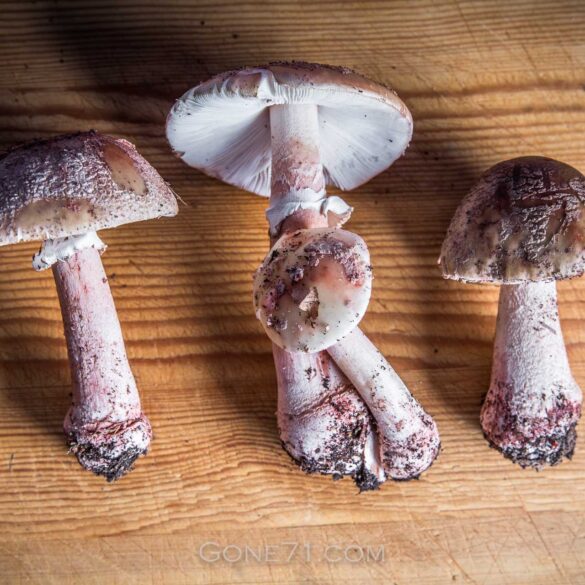
The blusher (A. rubescens) in cream sauce & pasta
Ingredients
- 300 g fresh young blusher (A. rubescens)
- 300g pasta of choice
- 100 ml soy cream or normal cream
- 1 red onion
- salt, pepper
- parsley
- parmesan
Instructions
- Cut the caps of the ready-to-cook mushrooms into strips.
- Chop the onion and sauté briefly. Add the mushrooms and sauté both for 5 minutes.
- Add the cream and simmer for another 5 to 10 minutes.
- Season with salt and pepper.
- At the same time, cook the pasta.
- Arrange and garnish with parsley and parmesan.
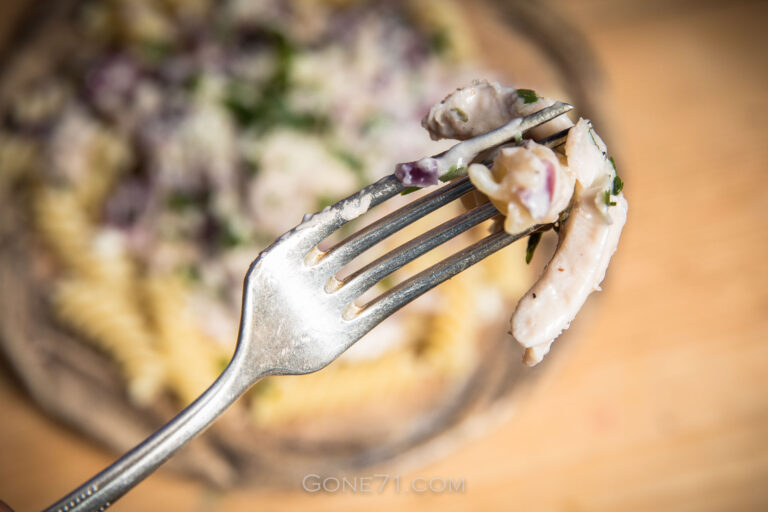
We have compiled this overview with the best of knowledge and belief, but do not claim to be complete and reserve the right to make errors.
Learn more about poisonous mushrooms and mushroom poisons here
↓↓↓
Find some inspiration in other mushroom recipes
↓↓↓
